-
 Bitcoin
Bitcoin $117,576.6195
-0.21% -
 Ethereum
Ethereum $2,938.5668
-1.35% -
 XRP
XRP $2.7699
4.60% -
 Tether USDt
Tether USDt $1.0003
0.01% -
 BNB
BNB $688.1624
-0.01% -
 Solana
Solana $160.5113
-1.95% -
 USDC
USDC $0.9999
0.01% -
 Dogecoin
Dogecoin $0.1976
-0.70% -
 TRON
TRON $0.3008
1.54% -
 Cardano
Cardano $0.7159
-2.16% -
 Hyperliquid
Hyperliquid $46.2240
2.04% -
 Stellar
Stellar $0.3966
22.03% -
 Sui
Sui $3.3928
-3.11% -
 Chainlink
Chainlink $15.1204
-2.43% -
 Bitcoin Cash
Bitcoin Cash $515.1741
-1.19% -
 Avalanche
Avalanche $20.8130
-0.90% -
 Hedera
Hedera $0.2001
-2.12% -
 UNUS SED LEO
UNUS SED LEO $9.0522
0.72% -
 Shiba Inu
Shiba Inu $0.0...01316
-2.01% -
 Toncoin
Toncoin $2.9843
0.61% -
 Litecoin
Litecoin $92.6745
-2.71% -
 Polkadot
Polkadot $3.9483
-0.06% -
 Monero
Monero $328.5347
1.10% -
 Dai
Dai $0.9998
0.01% -
 Ethena USDe
Ethena USDe $1.0006
-0.01% -
 Uniswap
Uniswap $8.3739
-6.50% -
 Bitget Token
Bitget Token $4.4241
-1.99% -
 Pepe
Pepe $0.0...01222
-3.96% -
 Aave
Aave $300.5203
-3.61% -
 Bittensor
Bittensor $382.2607
-1.92%
How does a yield farming aggregator use smart contracts?
Smart contracts in yield farming aggregators automate fund allocation, strategy execution, and reward compounding across DeFi protocols to maximize returns.
Jul 11, 2025 at 02:49 am
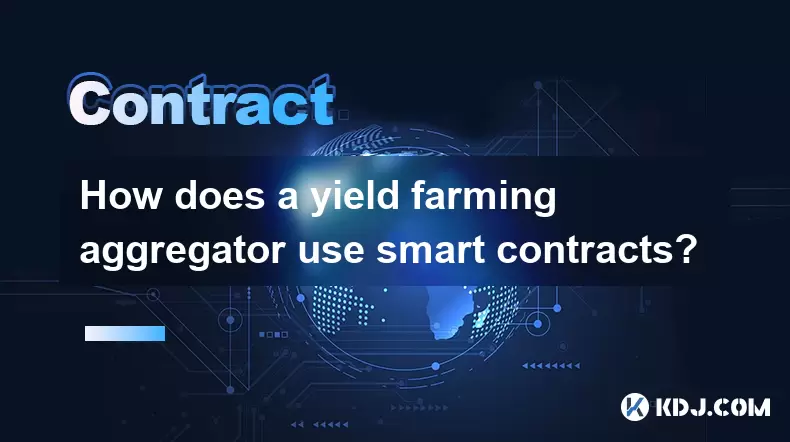
Understanding the Role of Smart Contracts in Yield Farming Aggregators
A yield farming aggregator leverages smart contracts to automate and optimize the process of yield generation across multiple decentralized finance (DeFi) protocols. These smart contracts are self-executing agreements with the terms directly written into code, deployed on blockchain networks such as Ethereum or Binance Smart Chain. The use of smart contracts enables aggregators to interact with various DeFi platforms seamlessly, without requiring manual input from users.
Smart contracts act as the backbone of yield farming aggregators by managing fund allocation, strategy execution, and reward distribution automatically. This ensures that users can maximize returns while minimizing risks associated with manual participation in different DeFi protocols.
Automated Fund Allocation Across Protocols
One of the primary functions of a yield farming aggregator is to allocate user funds across multiple DeFi platforms based on current yields and risk profiles. Smart contracts handle this by continuously scanning available opportunities and shifting capital accordingly.
- The aggregator’s smart contract pulls data from oracles or integrated DeFi platforms to evaluate which protocol offers the best return at any given time.
- Based on pre-defined logic, the contract deposits tokens into the most profitable liquidity pools or lending protocols.
- If yields drop or better opportunities arise, the smart contract rebalances the portfolio automatically.
This dynamic allocation ensures that users don’t miss out on high-yield opportunities and are protected from underperforming strategies.
Strategy Execution and Compounding Rewards
Yield farming aggregators often implement compounding strategies to increase earnings over time. Smart contracts play a critical role in executing these strategies efficiently.
- Smart contracts harvest rewards generated from liquidity provision or staking activities automatically.
- They then reinvest those rewards back into the same or alternative yield-generating positions.
- This compounding effect increases the principal amount over time, leading to exponential growth potential.
By using gas-efficient methods and batched transactions, the aggregator minimizes transaction costs while maximizing the frequency of compounding cycles.
Risk Mitigation Through Contract-Based Controls
Security and risk management are essential for yield farming aggregators due to the volatile nature of DeFi. Smart contracts incorporate several mechanisms to protect user assets.
- Aggregators often deploy timelocks and multi-signature wallets to control access to critical contract functions.
- Some contracts include emergency withdrawal options to safeguard user funds during unexpected events.
- Smart contracts may also integrate with insurance protocols or pause functionality if vulnerabilities are detected.
These measures ensure that even in the event of external exploits or market fluctuations, user funds remain secure or recoverable.
User Interaction via Tokenized Positions
To simplify the user experience, yield farming aggregators often issue tokenized representations of deposited assets. These tokens represent a share in the pool managed by the smart contract.
- When users deposit assets into the aggregator, they receive a token like xToken or yToken, representing their stake.
- These tokens can be transferred, traded, or used in other DeFi applications, enabling further composability.
- When users decide to withdraw, the smart contract redeems their token and delivers the underlying assets plus accrued yield.
This abstraction layer allows users to engage with complex strategies without needing technical expertise or direct interaction with multiple protocols.
Frequently Asked Questions
Q: How do I know which yield farming aggregator uses reliable smart contracts?
A: You should review the project's audit history, transparency reports, and community feedback. Reputable aggregators typically publish smart contract source codes on platforms like Etherscan and undergo third-party security audits.
Q: Can smart contracts in yield farming aggregators be updated after deployment?
A: Many yield farming aggregators use upgradable proxy contracts, allowing developers to fix bugs or enhance functionality without disrupting user funds. However, upgrades usually require governance approval or adhere to strict timelock mechanisms.
Q: What happens if a smart contract bug is discovered in an aggregator?
A: If a vulnerability is identified, the team or governance body may initiate an emergency shutdown or pause certain functions. Users are advised to monitor announcements and consider withdrawing funds if significant risks are exposed.
Q: Are there tools to track the performance of a yield farming aggregator’s smart contracts?
A: Yes, many analytics platforms provide real-time tracking of fund movements, yield rates, and contract interactions. Tools like Dune Analytics or DeFi Pulse offer dashboards where you can analyze how smart contracts manage assets and generate returns.
Disclaimer:info@kdj.com
The information provided is not trading advice. kdj.com does not assume any responsibility for any investments made based on the information provided in this article. Cryptocurrencies are highly volatile and it is highly recommended that you invest with caution after thorough research!
If you believe that the content used on this website infringes your copyright, please contact us immediately (info@kdj.com) and we will delete it promptly.
- Tether's USDT on Blockchains: Streamlining for Scalability and Regulatory Shifts
- 2025-07-12 22:30:12
- HBAR Price Prediction: Hedera's AI Play and the $100 Dream
- 2025-07-12 23:10:12
- Shiba Inu, Meme Coin, Quick Gains: Is the Hype Fading?
- 2025-07-13 00:15:16
- Pepeto, DOGE, and the Meme Coin Frenzy: What's Hot and What's Not
- 2025-07-12 22:50:12
- XRP Price Prediction: Riding the Crypto Coaster to New Highs?
- 2025-07-12 22:50:12
- Crypto's Wild Ride: Unrealized Gains, Regulatory Shifts, and Digital Asset Dominance
- 2025-07-12 22:30:12
Related knowledge
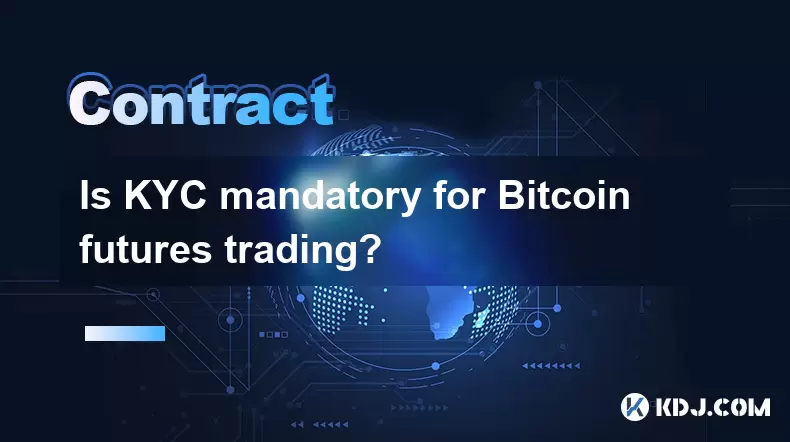
Is KYC mandatory for Bitcoin futures trading?
Jul 12,2025 at 10:56pm
Understanding KYC in the Context of Bitcoin Futures TradingKnow Your Customer (KYC) is a regulatory requirement that financial institutions and servic...
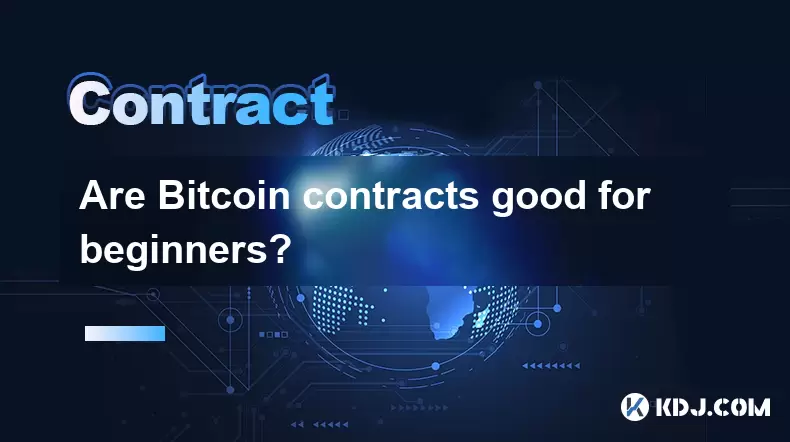
Are Bitcoin contracts good for beginners?
Jul 12,2025 at 08:14pm
Understanding Bitcoin ContractsBitcoin contracts, often referred to as Bitcoin futures or perpetual contracts, are financial derivatives that allow tr...
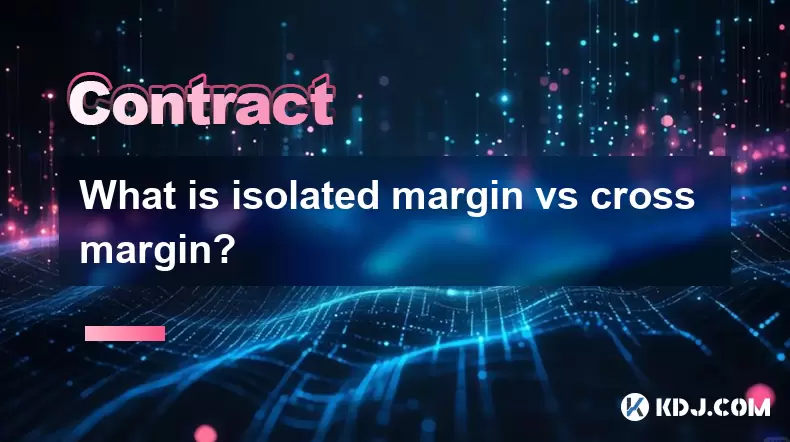
What is isolated margin vs cross margin?
Jul 12,2025 at 04:01pm
Understanding Margin in Cryptocurrency TradingIn cryptocurrency trading, margin refers to the amount of funds a trader must deposit to open and mainta...
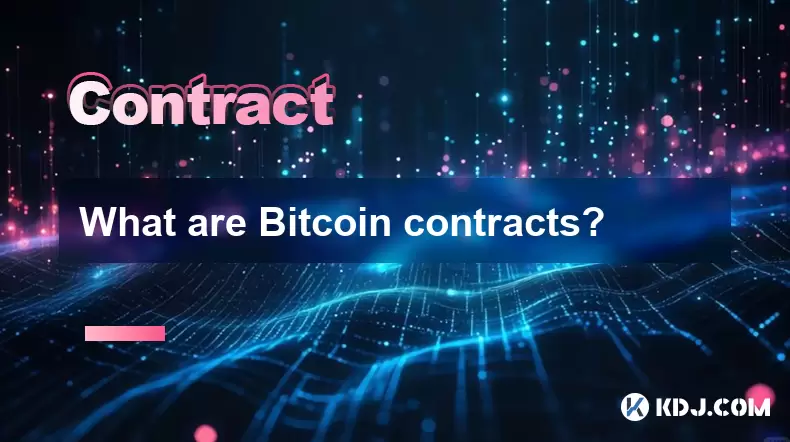
What are Bitcoin contracts?
Jul 12,2025 at 06:21pm
What Are Bitcoin Contracts?Bitcoin contracts refer to smart contracts or derivative agreements that are built on blockchain platforms and utilize Bitc...
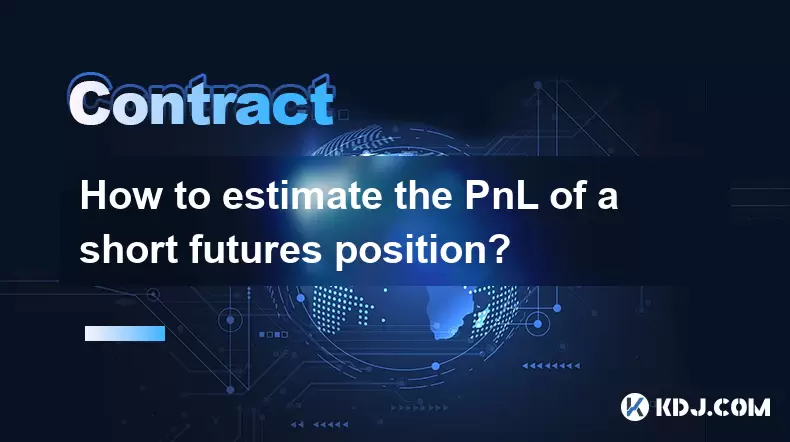
How to estimate the PnL of a short futures position?
Jul 10,2025 at 05:00pm
Understanding the Basics of Futures Trading and PnLIn futures trading, a trader enters into a contract to buy or sell an asset at a predetermined pric...
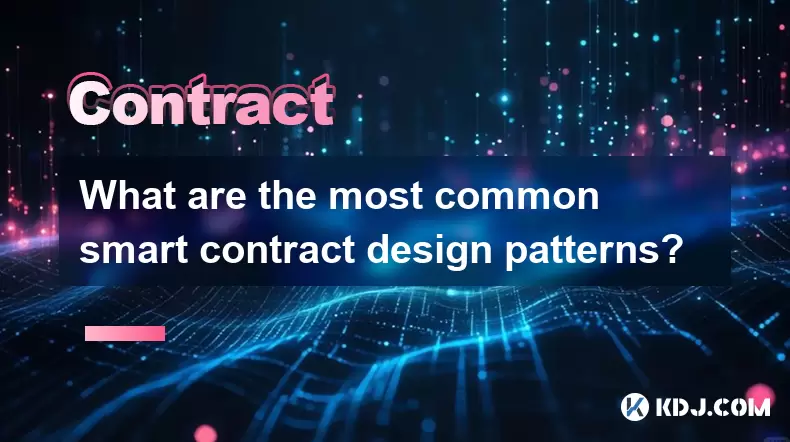
What are the most common smart contract design patterns?
Jul 10,2025 at 09:29pm
Introduction to Smart Contract Design PatternsSmart contract design patterns are standardized solutions to recurring problems encountered during the d...

Is KYC mandatory for Bitcoin futures trading?
Jul 12,2025 at 10:56pm
Understanding KYC in the Context of Bitcoin Futures TradingKnow Your Customer (KYC) is a regulatory requirement that financial institutions and servic...

Are Bitcoin contracts good for beginners?
Jul 12,2025 at 08:14pm
Understanding Bitcoin ContractsBitcoin contracts, often referred to as Bitcoin futures or perpetual contracts, are financial derivatives that allow tr...

What is isolated margin vs cross margin?
Jul 12,2025 at 04:01pm
Understanding Margin in Cryptocurrency TradingIn cryptocurrency trading, margin refers to the amount of funds a trader must deposit to open and mainta...

What are Bitcoin contracts?
Jul 12,2025 at 06:21pm
What Are Bitcoin Contracts?Bitcoin contracts refer to smart contracts or derivative agreements that are built on blockchain platforms and utilize Bitc...

How to estimate the PnL of a short futures position?
Jul 10,2025 at 05:00pm
Understanding the Basics of Futures Trading and PnLIn futures trading, a trader enters into a contract to buy or sell an asset at a predetermined pric...

What are the most common smart contract design patterns?
Jul 10,2025 at 09:29pm
Introduction to Smart Contract Design PatternsSmart contract design patterns are standardized solutions to recurring problems encountered during the d...
See all articles

























































































